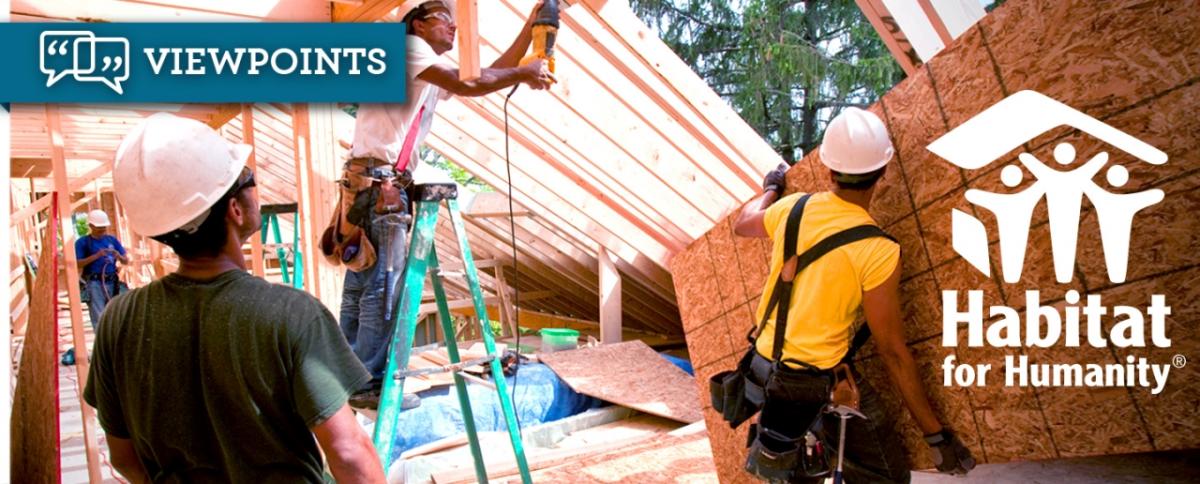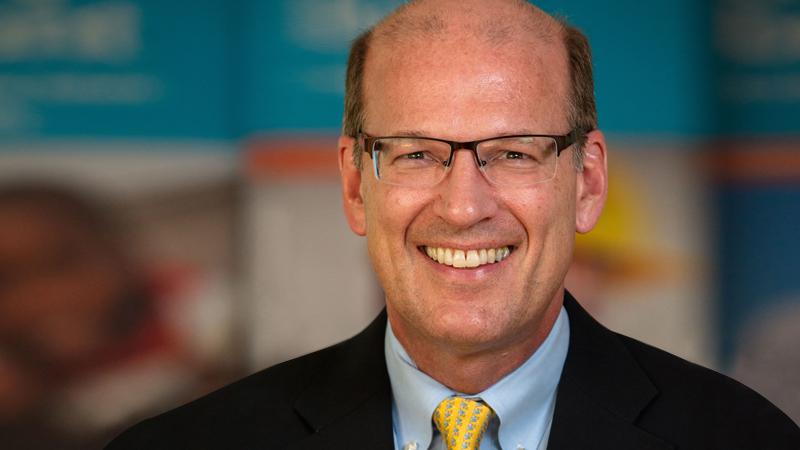Habitat for Humanity: Creating ‘a Safer Place to Sleep at Night’ for Millions of People
For 40 years, Habitat has helped individuals and families improve their living conditions and shape a better future
Habitat for Humanity: Creating ‘a safer place to sleep at night’ for millions o…
Wells Fargo's ‘Viewpoints’ invites guest authors from outside of Wells Fargo to share an important perspective related to their work. Today, we welcome Jonathan T.M. Reckford, CEO of Habitat for Humanity. For more Viewpoints, visit Wells Fargo Stories.
After four decades of helping families build or improve a place they can call home, Habitat for Humanity® has realized that a house is more than walls, a roof, a floor, and a door. Creating opportunities that enable people to improve their living conditions can lead to positive changes like improved health, better education outcomes, and the ability to make forward-looking choices.
Habitat has grown from a grassroots effort — that began on a community farm in southern Georgia — to a global, nonprofit housing organization working in local communities across all 50 states in the U.S. and in more than 70 countries. Last year alone, Habitat improved the housing conditions of nearly 3.5 million people worldwide. And since our founding in 1976, we have helped more than 13.2 million individuals have a safer place to sleep at night.
In many locations, we serve as a catalyst to increase shelter access. For example, through our MicroBuild program, we train and lend capital to local financial service providers, who then lend to low-income families to improve their homes. More than 2 million people are now living in better housing as a result of MicroBuild investments.
We are also committed to advocacy efforts. The situation for 1.8 million women in Bolivia, for example, changed drastically when Habitat helped amend property laws so that, for the first time, women were able to have the title to their homes and to their land.
However, particularly in the U.S., we are known by most people for our direct service — for helping families build or repair their homes. We think it is critical to include families in being a part of their own housing solutions. With some specific exceptions, Habitat does not build houses for anyone: We partner with individuals and families to help them shape a better future.
Habitat homeowners make a down payment and pay an affordable mortgage. They also put in hundreds of “sweat equity” hours to build their homes and the homes of others, and many take financial education and homeowner classes. Because we set out to help people succeed, foreclosure rates remain extremely low — around 2 percent in the U.S., even though we lend to subprime borrowers.
The work done by volunteers is one of the hallmarks of the Habitat model. During fiscal year 2017, Habitat engaged more than 2.1 million volunteers worldwide. We also rely on donations from individuals and organizations to assist with our efforts to help families achieve strength, stability, and self-reliance.
Affordable housing plays a critical role in strong and stable communities
As one of Habitat’s dedicated corporate supporters, Wells Fargo has a long history of working with us to create affordable housing opportunities and to strengthen local communities. Since 2010, Wells Fargo team members have volunteered more than 355,000 hours in support of Habitat projects, helping to build and improve more than 2,500 Habitat homes in partnership with families in need of safe and decent shelter.
In addition, Wells Fargo and the Wells Fargo Housing Foundation provided a combined $66 million to Habitat for Humanity International and our local affiliates in support of affordable and sustainable housing. This funding included an $18 million gift to Habitat at the end of 2017 to help strengthen our operations and services, including disaster preparedness and ongoing post-disaster rebuilding efforts in Texas, Florida, and Puerto Rico.
Commitment to our neighborhood revitalization program has also been a key area of support for Wells Fargo, which has funded 84 neighborhood revitalization grants to serve nearly 10,600 families. In addition, more than 400 Wells Fargo team members have volunteered approximately 1,400 hours to help with neighborhood revitalization efforts such as murals, home preservation projects, community gardens, neighborhood planning meetings, and home rehabs.
Habitat launched neighborhood revitalization efforts in 2010 as a response to the economic downturn and resulting housing crisis. As is often the case, low-income families who could least afford setbacks were affected the most. They experienced heavy job losses, resulting in growing numbers of foreclosed and abandoned properties in blighted and demoralized neighborhoods.
At a time when local municipalities expressed concern over our building more new houses in communities where many properties stood vacant, we began to involve volunteers in repairing and rehabbing homes, in addition to starting new construction projects. By listening to residents and empowering them to identify both problems and solutions to neighborhood issues, Habitat helped them take a leadership role in transforming the places where they lived.
Participating in community development efforts allows Habitat to fully embrace our mission to build homes, communities, and hope. Only with the support of great advocates like Wells Fargo can we draw closer to our vision of a world where everyone has a decent place to live.



